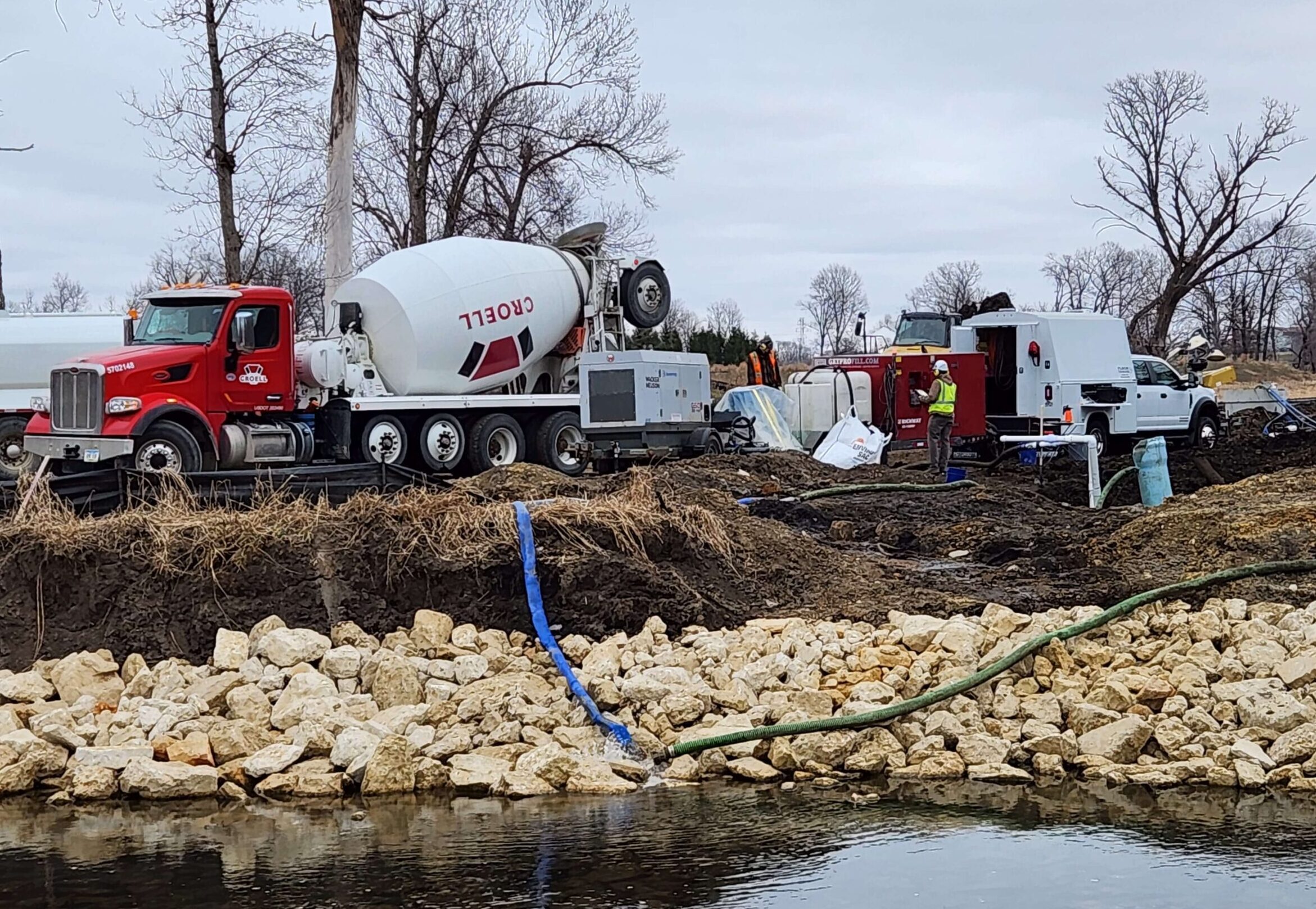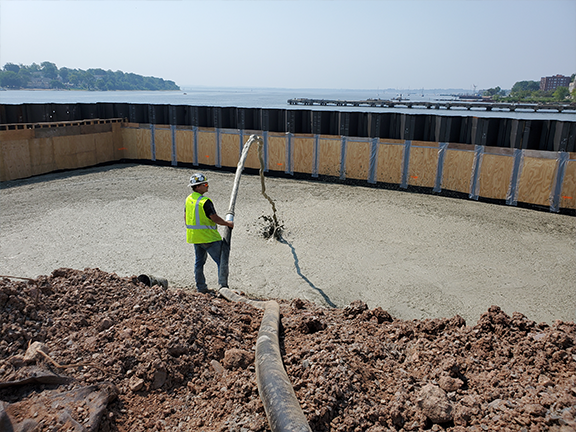
Cellular Concrete Applications
ProFill Technologies, Inc™ specializes in cellular concrete applications including pipe abandonment, load-reducing backfills, soil stabilization, annular space grouting, retaining wall backfill, lightweight fills, and more.
Lightweight Cellular Concrete
ProFill™ supplies state of the art equipment, chemical and mix design, along with professional staff for your lightweight cellular concrete installation. ProFill™ comes to your site to produce the foam concrete and manages the product quality to meet job specifications throughout the placement process.
Cellular Concrete Experts
Cellular Concrete for Stronger, Lighter Results
Cellular Concrete
Applications
- Pipe/Utility Abandonment
- Load-Reducing Backfill
- Slope Stabilization
- Annular Space Grouting
- Tunnel Abandonment/Backfill
- Pipe/Utility Trench Backfill
- Bridge Abutment Backfill
- Retaining Wall Backfill
- Lightweight Roof Deck Systems
- Geofoam Applications
- Permeable Lightweight Fill
Benefits of Cellular Concrete
- Lightweight and low density: Cellular concrete is significantly lighter than traditional fill materials, which can be an advantage in many construction projects and makes it suitable for use in a variety of applications, including as a fill material for voids and poor soil conditions.
- High insulating properties: Cellular concrete has high insulating properties, which is beneficial in energy-efficient building construction.
- Cost-effective: Cellular concrete can be more cost-effective than traditional fills due to its lower weight and fast, efficient rate of installation.
- Customizable: Cellular concrete can be customized to meet the specific needs of any project by adjusting the density, compressive strength, or permeability.
- Sustainable: The use of cellular concrete fill generates less carbon emissions by decreasing trucking volume of material delivered to a project.
- Ease of placement: Cellular concrete can be placed up to approximately 2,000 feet away and produces up to 100 yards/hour.
See Our Work!
Cellular Concrete Projects for Stronger, Lighter Results
FAQ – Cellular Concrete Questions
Cellular concrete is a type of concrete that is made using Portland Cement, water, and a preformed foam. The foam is combined with the cement slurry using a static mixer. The resulting concrete is lightweight, very flowable, and stable with virtually no bleed water.
In order to create the proper cellular concrete mixture, foam liquid concentrate is run through a foam generator, which combines air, water, and the concentrate to create a preformed foam (air) bubble. These small, highly-stable air bubbles are mixed with a cement slurry through inline-injection, and pumped via a hose to the fill location.
The main value proposition of cellular concrete is that it can be used in a variety of applications where a strong, lightweight fill material is required such as slope stability fills, annular space fills, and abandonment applications. It is also used for bridge abutment and retaining wall backfill.
Cellular concrete has a much lower density than traditional granular fills. Standard granular fill has a density of approximately 120 pounds per cubic foot (PCF) whereas the most common cellular concrete applications are in the 30 PCF range. Cellular concrete should be viewed as a soil replacement when considering strength. Even at its lightest density, cellular concrete is stronger and more durable than the best compacted soils. Common applications of cellular concrete yield a bearing capacity of over 14,000 pounds per square foot (PSF).
There are several benefits and advantages of using cellular concrete as a solution on your next project. Cellular concrete has these properties and benefits:
- Lightweight
- Very flowable and virtually self-leveling
- Extremely low bleed water
- Very stable volume
- Can be pumped long distances and at low pressure
- Low shrinkage properties
- Adjustable mix designs for strength and density requirements
- Very strong compared to traditional fills

